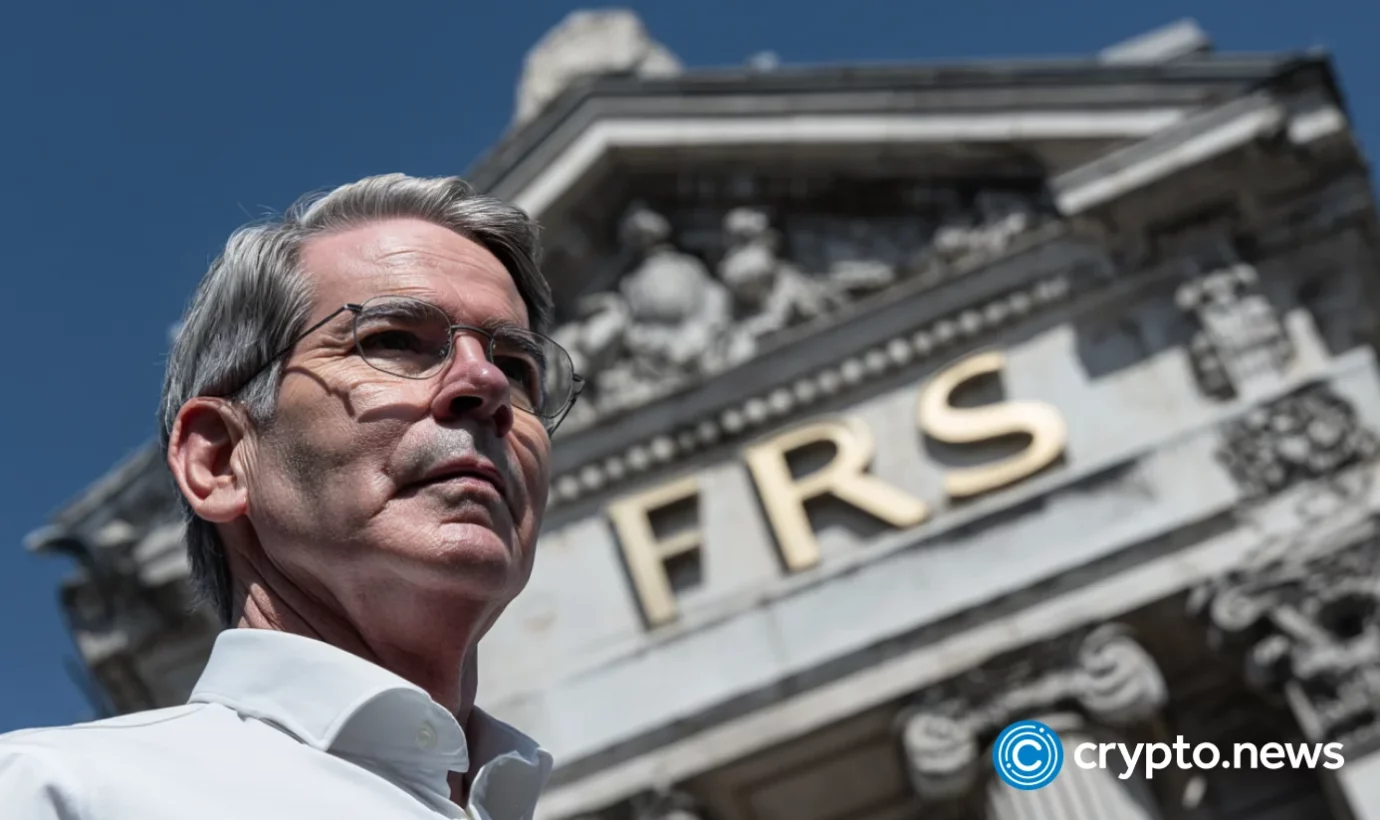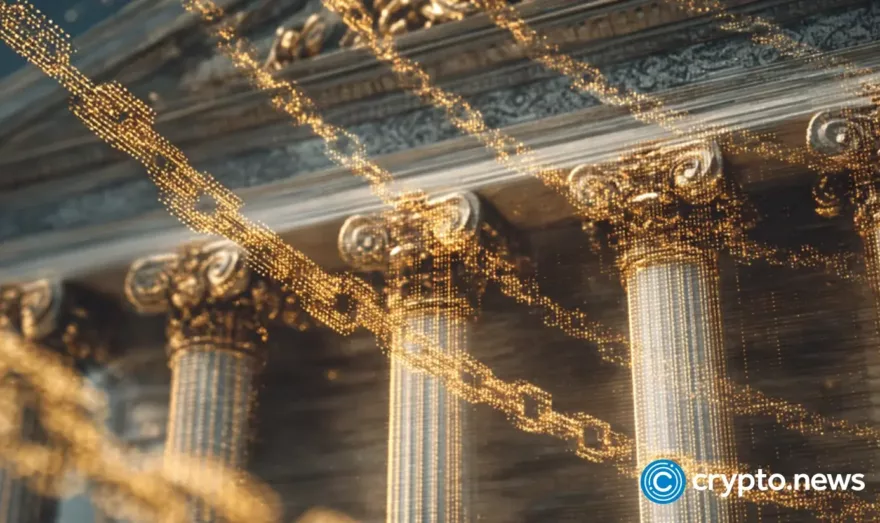The quiet campaign to make Scott Bessent the next Fed Chair — why crypto markets should care

What does crypto have to gain, or lose, if Trump taps Scott Bessent as the next Fed Chair and accelerates the shift toward pro-growth, risk-friendly policies?
Table of Contents
Scott Bessent is quietly rising in conversations about the Next Fed Chair
Scott Bessent, the current U.S. Treasury Secretary, has quietly emerged at the center of a growing conversation around who will lead the Federal Reserve after Jerome Powell’s term ends in May 2026.
According to a Jun. 10 report by Bloomberg, discussions are underway within and beyond the Trump administration about the possibility of nominating Bessent as Powell’s successor.
While the White House officially dismissed the report as inaccurate, the timing and tone of recent developments suggest the idea may not be entirely off the table.
President Trump hinted that a decision could arrive sooner than expected. During public remarks on June 6, he said he would name Powell’s replacement “very soon,” offering a rare public signal about a leadership transition still more than a year away.
That comment also marked a shift in tone from earlier this year, when Trump repeatedly criticized Powell for keeping interest rates high. He has argued that elevated rates are harming economic growth and interfering with the administration’s broader goals.
Tensions between Trump and Powell date back to Trump’s first term. Although Trump appointed Powell as Fed Chair in 2017, he soon became frustrated with Powell’s monetary policy stance, particularly the rate hikes in 2018 and 2019.
The conflict resurfaced during Trump’s second term. Powell’s refusal to lower rates in the face of inflation concerns and Trump’s tariff policies was viewed by some in the administration as obstructive.
On Apr. 4, Trump renewed his criticism on Truth Social, writing that “Powell’s termination cannot come fast enough.”
Federal law prevents the president from removing a sitting Fed chair without cause, a point reinforced by a Supreme Court ruling in May 2025 that upheld the Fed’s institutional independence. The decision effectively blocked any attempt to replace Powell before his term expires.
Bessent, for his part, advised against such an effort. In an interview with Politico on April 17, he warned that removing Powell early could trigger financial instability and undermine global confidence in U.S. economic governance.
How is the Fed Chair appointed?
The Fed Chair is nominated by the President of the U.S. and must be confirmed by the Senate. The position carries a four-year term, although reappointments are common, and chairs often serve across multiple administrations.
While the Fedis structured to function independently of political pressure, the nomination process remains political in nature, especially during periods of economic volatility or leadership transition.
Powell’s current term ends in May 2026, giving the Trump administration more than a year to evaluate potential successors. Even so, early signals about the direction of the nomination can influence market behavior well in advance of any formal decision.
Analysts and global financial institutions track these developments closely. Shifts in leadership at the Fed often coincide with changes in monetary policy, interest rate strategy, and financial regulation.
The role of the Chair extends beyond setting interest rates. It also includes managing inflation expectations, ensuring financial system stability, and communicating policy direction to domestic and international audiences.
For investors, clarity around the next nominee, and the policy philosophy they are likely to bring, can influence confidence levels and capital allocation decisions across both traditional and crypto markets.
Scott Bessent Fed Chair talk gains momentum, but rivals like Kevin Warsh loom
Bessent’s financial background, including time spent as Soros Fund Management’s chief investment officer, has added to his credibility among Republican economic advisors.
Still, Bessent is not the only name being discussed. Kevin Warsh, a former Fed governor and one of the candidates interviewed for the Treasury Secretary post in late 2024, is considered a strong contender due to his central banking experience.
Economist Arthur Laffer has publicly endorsed Warsh, stating, “I think Kevin Warsh is just perfect for the job,” while acknowledging that Bessent’s strengths lie in areas other than monetary policy.
Other figures floated include Kevin Hassett, who leads the White House’s National Economic Council, Fed Governor Christopher Waller, and former World Bank President David Malpass.
Each brings a different profile, but all are viewed as potentially more aligned with Trump’s economic approach. What makes the situation notable is not just who the next Fed chair might be, but how early the discussion has begun.
While Bessent has not publicly confirmed interest in the role, his proximity to decision-makers and his growing influence on Trump’s economic agenda are enough to keep the conversation going.
Decoding the Scott Bessent crypto calculus
If Bessent is eventually nominated to lead the Fed, the implications would likely go well beyond interest rate decisions. His record as Treasury Secretary already offers early signals about how he might approach monetary leadership.
Since taking office in early 2025, Bessent has been a key figure in executing the economic side of President Trump’s policy agenda. He has worked to sustain financial market confidence while backing a mix of tax reductions and tariffs aimed at restructuring global trade relationships.
He has also been directly involved in U.S.-China trade negotiations, a process that continues to influence volatility and risk sentiment. Both factors tend to spill over into crypto markets, where shifts in geopolitical or currency outlooks often affect demand for decentralized alternatives like Bitcoin (BTC).
Bessent’s name has also been linked to the Strategic Bitcoin Reserve proposal, a Trump-era initiative exploring the idea of holding Bitcoin at a national level.
While he has not taken a formal position on crypto regulation, several reports have described him as “pro-Bitcoin,” citing his openness to including digital assets within broader economic strategy.
In a comment on Jun. 11, Bessent said, “I have the best job in Washington. The president will decide who’s best for the economy and the American people.”
Although he did not confirm interest in the Fed Chair position, the remark reinforced the perception that he remains central to Trump’s economic team.
If he were to assume leadership of the Fed, markets might expect a tilt toward a more flexible policy approach aligned with Trump’s preference for lower rates and looser financial conditions.
During his time at Treasury, Bessent supported fiscal measures focused on growth, many of which benefit from accommodative monetary policy.
If those views carry over into a central banking role, traders could interpret it as a signal for future rate cuts, particularly if inflation data continues to ease.
Such a stance would likely benefit equities and risk assets, including crypto assets, which tend to perform better in environments where liquidity is high and interest rates are low.
Even so, Bessent’s crypto positioning appears tactical rather than ideological. His support for digital assets seems rooted in advancing Trump’s broader economic strategy, rather than stemming from a strong personal belief in blockchain technology.
For crypto markets, the more relevant factor may not be direct regulation but the macroeconomic backdrop Bessent would help shape, including interest rate policy, inflation expectations, and fiscal signals that continue to guide capital flows into or out of digital assets.
Experts see both stability and risk in a potential Jerome Powell resignation
Bessent’s potential nomination has drawn a broad spectrum of reactions from policymakers and market observers.
Tim Adams, president and CEO of the Institute of International Finance, pointed to Bessent’s standing in the global financial community as a reason to take his candidacy seriously.
“Given the amount of trust and confidence that the global financial community has in Scott Bessent, he’s an obvious candidate,” Adams said, while also describing him as “a dark horse candidate,” noting that formal momentum remains uncertain.
Steve Bannon, former White House strategist and close adviser to President Trump, spoke more emphatically. He praised Bessent’s policy leadership during a volatile start to 2025 and described him as both loyal to Trump’s agenda and dependable in the eyes of markets.
“He’s not just the star of the cabinet, but a safe pair of hands for global capital markets,” Bannon said.
Others have raised practical and institutional concerns. Economist Laffer acknowledged Bessent’s strengths but questioned the fit. “He is wonderful, but he already has a job. And his specialty is not monetary policy,” Laffer said.
Criticism has also come from lawmakers focused on preserving the Fed’s independence. Senator Elizabeth Warren, speaking on the Senate floor in November 2024, warned that political interference in the central bank could erode investor confidence.
“It would be a serious error for the Trump administration to interfere with the Fed’s independence,” she said, adding that placing a loyalist in the role might provoke instability rather than calm.
Market veteran Ed Yardeni expressed similar concerns. In an interview with Barron’s, he cited Bessent’s past references to a “shadow Fed chair” model as troubling.
Yardeni argued that even the perception of dual leadership could unsettle markets, stating it would “create a lot of noise in the market” and risk amplifying investor anxiety.
Market behavior has historically responded quickly to signals around Fed leadership. Following President Trump’s criticism of Powell in April 2025, U.S. equities registered a 2% single-day decline, reflecting how even political rhetoric around the Fed can affect investor sentiment.
Crypto markets, which tend to exhibit higher volatility, may react even more sharply to ambiguity or sudden shifts in central bank leadership. Without clarity, short-term swings could intensify.
Whether Bessent ultimately calms or unsettles markets may depend less on the nomination itself and more on how investors interpret the balance between his alignment with the White House and his respect for institutional boundaries.














